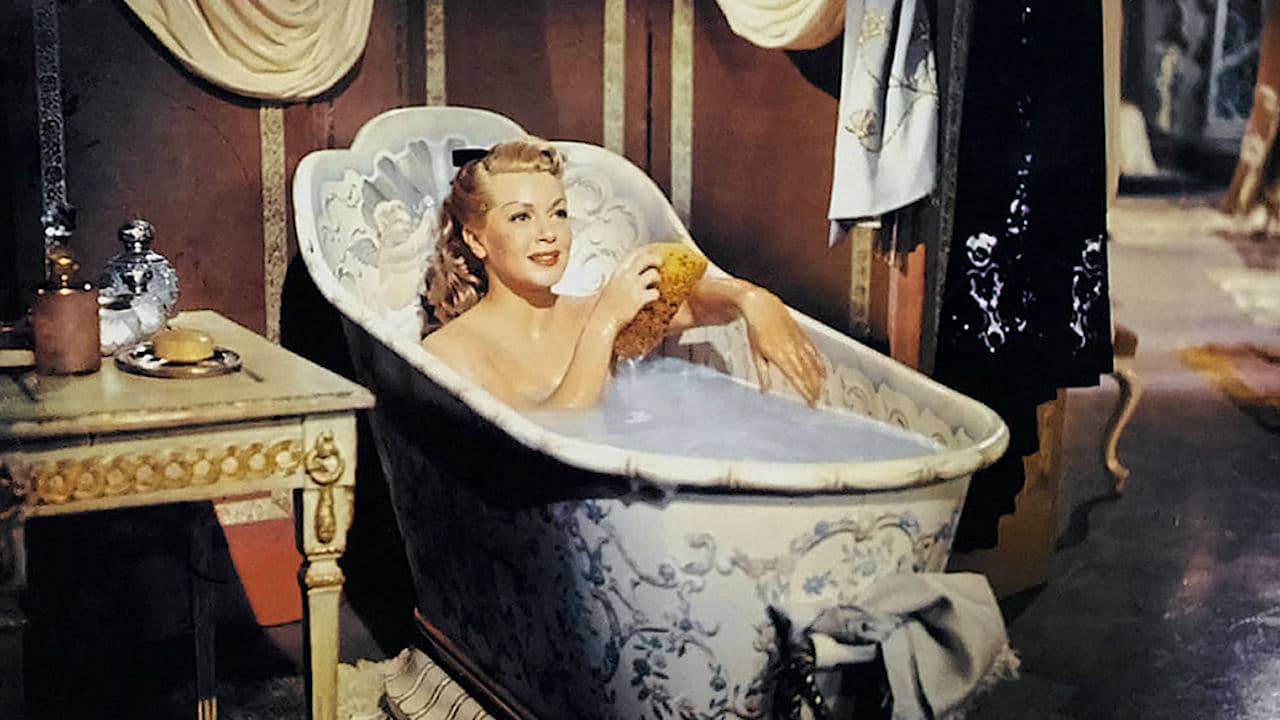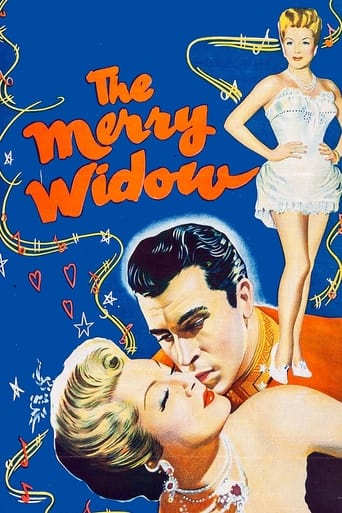

Music: Franz Lehar. Lyrics: Paul Francis Webster. Musical direction: Jay Blackton. Musical numbers created and staged by Jack Cole. Songs: "Vilia", "Night", "Girls, Girls, Girls", "I'm Going to Maxim's", "The Merry Widow Waltz", "Can-Can". Sound supervisor: Douglas Shearer. Western Electric Sound System. Producer: Joe Pasternak.Copyright 7 July 1952 by Loew's Inc. A Metro-Goldwyn-Mayer Picture. New York opening at Loew's State: 24 September 1952. U.S. release: September 1952. U.K. release: 17 November 1952. Australian release: 7 November 1952. 9,360 feet. 104 minutes.SYNOPSIS: A musical fantasy in which the young American widow of the wealthiest ex-citizen of an imaginary Balkan country, is pursued by a dashing count, who has been ordered by the king of her late husband's country to marry her, in order to gain control of her wealth and thus stave off his country's imminent bankruptcy. - Copyright Summary. Lehar's heroine was carefully rewritten for its leading lady (including an Americanization of the character), with this fresh treatment discreetly relieving the widow of almost all her musical requirements. (The widow does contribute one vocal selection when she shares a duet with Danilo at Maxim's. Her voice, however, was that of singer Trudy Erwin, who had previously dubbed for Lana Turner in "Mr. Imperium").COMMENT: I'd been avoiding this film for years, but it turned out to be a very pleasant surprise. Although its reputation has been eclipsed by the two previous versions, this one has sumptuous production values going for it and Lamas, who sings "Vilia", "Girls, Girls, Girls" and "I'm Going to Maxim's", is not outclassed by Maurice Chevalier. Turner is admirably suited to her role too, and there is some agreeable comic support from the likes of Richard Haydn, Thomas Gomez and John Abbott.
... View MoreThis 1952 MGM production of Franz Lehar's classic pales in comparison with the Erns Lubitsch's lavish version, that even in black and white, is richer and more appealing to the eye than the later account. Part of the blame must go to whoever decided to tailor make the film to suit its star, Lana Turner, and the direction of Curtis Bernhardt. As an operetta "The Merry Widow" has been delighting audiences for quite some time. The music alone is worth the price of admission, or in this case, the price of being able to get TCM on cable.The other interesting thing is how the Technicolor used in the filming of this remake has faded after more than fifty years. The copy shown by TCM recently had a faded look that made it less interesting to watch.Lana Turner and Fernando Lamas made an attractive couple, but their chemistry doesn't quite make it. Veterans Una Merkel, Thomas Gomez, Richard Haydn, and Marcel Dalio, among others, try their best, but their efforts don't make the film better. We would strongly advise discerning viewers to check out the older Lubitsch's take on this timeless work.
... View MoreIn Australia we are still able to see the beautiful MGM musical in a real 1952 vintage 3 strip Technicolor print which is still in very good condition. I saw it last year and apart from a few bumpy reel changes it is very clean and not scratched too much. Lucky us! I know this is not the definitive version purists rave about (that is the 1934 version) but MGM in 1952 was about as technically lush and state of the art perfect as one could want for any musical. In fact MW is is as colorful and as visually lavish as MY FAIR LADY or ON A CLEAR DAY or HALF A SIXPENCE or even the indoor scenes in TITANIC to any modern audience. The Gen x-ers who saw this version were absolutely in awe of how spectacular this REAL Technicolor version is. Lana is amazingly beautiful and Fernando is his virile Latin he man best. The Waltz in the last reel is exquisite. The only irritating bit is the same 'mid-west-Yanks-in-Europe' antics that annoy in LOVELY TO LOOK AT made the same year. However, who really cares when THE MERRY WIDOW is visually astonishing and musically delicious. What a year it was at MGM in 1952! And this much guarded and treasured proper Hollywood 3 strip Technicolor print is staying here, folks! If you wanna see it you have to come visit.
... View MoreThis movie is wonderful. You can relax and enjoy a romantic film with one of the most handsome and sensuous leading men in Hollywood history - Fernando Lamas. And Lana Turner is beautiful. The movie allows you to forget about your worries and just enjoy a wonderful, romantic time.
... View More